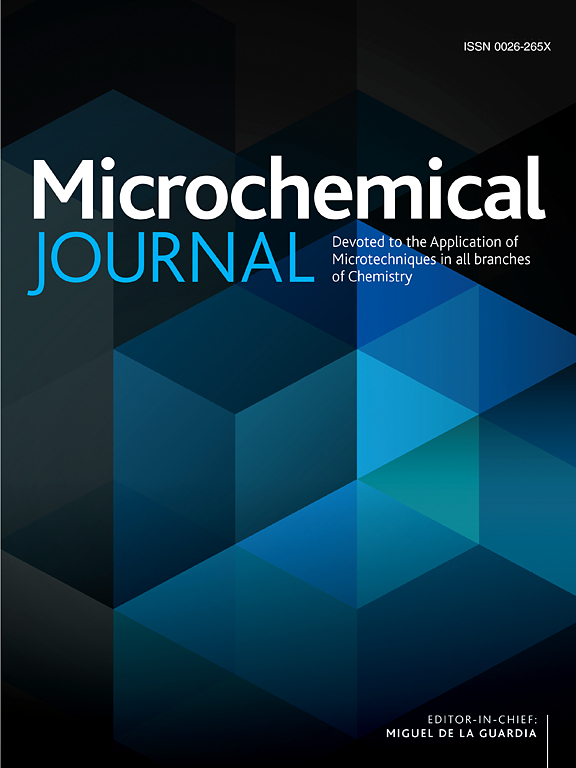A study on the dynamic changes and relationships of volatile and semi-volatile compounds in flaxseed during the roasting procedure by using untargeted GC–MS combined with advanced chemometrics
IF 4.9
2区 化学
Q1 CHEMISTRY, ANALYTICAL
引用次数: 0
Abstract
Roasting flaxseed is an important stage in producing rich aromas. At present, characterizing the dynamically changed compounds is difficult. Here, a novel untargeted strategy for accurately and comprehensively analyzing volatile compounds such as flavors and semi-volatile compounds such as sugars and amino acids was provided, which is accomplished by integrating gas chromatography–mass spectrometry (GC–MS) with our newly developed automatic data analysis software AntDAS-GCMS. Samples at different roasting stages were collected, with the online released volatile compounds and inherent semi-volatile compounds analyzed simultaneously. Raw GC–MS data files were imported into AntDAS-GCMS to automatically perform compound resolution, registration, and identification. Finally, 53 volatile compounds and 83 semi-volatile compounds were screened and identified, whose dynamic variations during roasting were revealed. The relationship between semi-volatile and volatile compounds was studied in detail. The developed strategy provided a new solution for dynamic quality control during roasting.

求助全文
约1分钟内获得全文
求助全文
来源期刊

Microchemical Journal
化学-分析化学
CiteScore
8.70
自引率
8.30%
发文量
1131
审稿时长
1.9 months
期刊介绍:
The Microchemical Journal is a peer reviewed journal devoted to all aspects and phases of analytical chemistry and chemical analysis. The Microchemical Journal publishes articles which are at the forefront of modern analytical chemistry and cover innovations in the techniques to the finest possible limits. This includes fundamental aspects, instrumentation, new developments, innovative and novel methods and applications including environmental and clinical field.
Traditional classical analytical methods such as spectrophotometry and titrimetry as well as established instrumentation methods such as flame and graphite furnace atomic absorption spectrometry, gas chromatography, and modified glassy or carbon electrode electrochemical methods will be considered, provided they show significant improvements and novelty compared to the established methods.
 求助内容:
求助内容: 应助结果提醒方式:
应助结果提醒方式:


